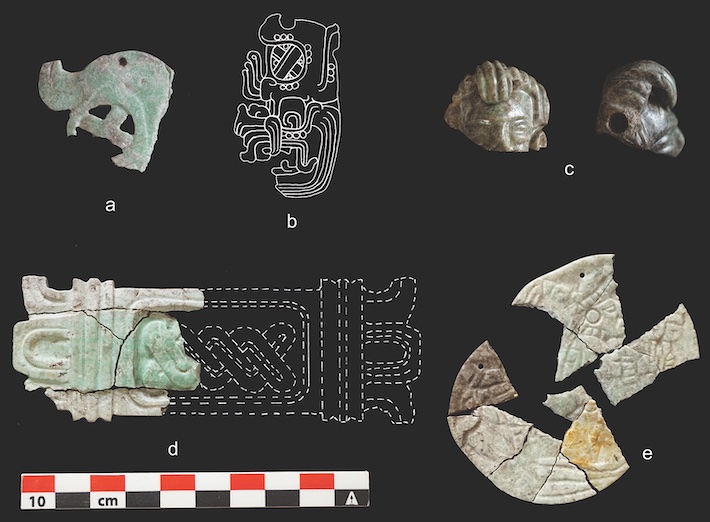 GUATEMALA CITY, GUATEMALA—According to a CNN report, burned human remains and artifacts have have been discovered under a pile of discarded construction materials in a room beneath a temple at Guatemala’s Maya site of Ucanal by a team of researchers led by Christina T. Halperin of the University of Montreal. The warped, shrunken condition of the bones, thought to represent four adults, indicates that they had been burned at high temperatures, Halperin said. Radiocarbon dating indicates that the burning of the remains occurred between A.D. 773 and 881, when the remains were already about 100 years old. The types of artifacts found with the bones, including body ornaments made of greenstone, pendants made of mammal teeth, shell beads, and weapons, suggest that the dead may have been royal rulers, she added. Yet no scorch marks were found at the site, suggesting that the burning of the bones took place at another location. A possible clue to the reason for this unusual burial may come in the form of inscriptions mentioning the name Papmalil, who was labeled a “ochk’in kaloomte,” or “western overlord,” which have also been found at Ucanal. These inscriptions have been dated to about the same time as the burning of the deceased rulers’ remains. Halperin and her colleagues suggest that the bones of the former leaders may have been removed from their tombs and burned in a ceremony to mark a shift in the city’s leadership. “It was such an extraordinary burning that it had to have been known by the public at large,” Halperin explained. Read the original scholarly article about this research in Antiquity. To read about ritual pendants and stones from Ucanal, go to "World Roundup: Guatemala."
GUATEMALA CITY, GUATEMALA—According to a CNN report, burned human remains and artifacts have have been discovered under a pile of discarded construction materials in a room beneath a temple at Guatemala’s Maya site of Ucanal by a team of researchers led by Christina T. Halperin of the University of Montreal. The warped, shrunken condition of the bones, thought to represent four adults, indicates that they had been burned at high temperatures, Halperin said. Radiocarbon dating indicates that the burning of the remains occurred between A.D. 773 and 881, when the remains were already about 100 years old. The types of artifacts found with the bones, including body ornaments made of greenstone, pendants made of mammal teeth, shell beads, and weapons, suggest that the dead may have been royal rulers, she added. Yet no scorch marks were found at the site, suggesting that the burning of the bones took place at another location. A possible clue to the reason for this unusual burial may come in the form of inscriptions mentioning the name Papmalil, who was labeled a “ochk’in kaloomte,” or “western overlord,” which have also been found at Ucanal. These inscriptions have been dated to about the same time as the burning of the deceased rulers’ remains. Halperin and her colleagues suggest that the bones of the former leaders may have been removed from their tombs and burned in a ceremony to mark a shift in the city’s leadership. “It was such an extraordinary burning that it had to have been known by the public at large,” Halperin explained. Read the original scholarly article about this research in Antiquity. To read about ritual pendants and stones from Ucanal, go to "World Roundup: Guatemala."
Burned Bodies at Maya Site May Reflect Regime Change
